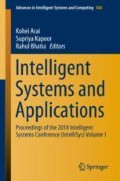Abstract
Wildfires burns 4–10 million acres across the United States with suppression costs approaching $2 billion, annually. High intensity wildfires contribute to post fire erosion, flooding and loss of timber resources. Accurate assessment of the effects of wildland fire on the environment is critical to improving the management of wildland fire as a tool for restoring ecosystem resilience. Sensor miniaturization and small unmanned aircraft systems (sUAS) offer a new paradigm, providing affordable, on-demand monitoring of wildland fire effects at a much finer spatial resolution than is possible with satellite or manned aircraft, providing finer detail at a much lower cost. This project examined the effect hyperspatial imagery acquired with a sUAS has on improving the extraction of post-fire effects knowledge from imagery. Support vector machines were shown to map post-fire effects land cover classes more accurately using hyperspatial color imagery than 30 m color imagery.
This publication was made possible by Undergraduate Research Grants from National Aeronautics and Space Administration Idaho Space Grant Consortium and an Institutional Development Award (IDeA) from the National Institute of General Medical Sciences of the National Institutes of Health under Grant #P20GM103408.
Access this chapter
Tax calculation will be finalised at checkout
Purchases are for personal use only
References
Mora, C., Tittensor, D.P., Adl, S., Simpson, A.G., Worm, B.: How many species are there on Earth and in the ocean? PLoS Biol. 9(8), e1001127 (2011)
National Interagency Fire Center (NIFC), “Federal Firefighting Costs,” (2017)
Keeley, J.E.: Fire intensity, fire severity and burn severity: a brief review and suggested usage. Int. J. Wildland Fire 18(1), 116–126 (2009)
Key, C.H., Benson, N.C.: Landscape assessment (LA) (2006)
Hamilton, D., Bowerman, M., Collwel, J., Donahoe, G., Myers, B.: A spectroscopic analysis for mapping wildland fire effects from remotely sensed imagery. J. Unmanned Veh. Syst. (2017). https://doi.org/10.1139/juvs-2016-0019
Lentile, L.B., et al.: Remote sensing techniques to assess active fire characteristics and post-fire effects. Int. J. Wildland Fire 15(3), 319–345 (2006)
Hudak, A.T., Ottmar, R.D., Vihnanek, R.E., Brewer, N.W., Smith, A.M., Morgan, P.: The relationship of post-fire white ash cover to surface fuel consumption. Int. J. Wildland Fire 22(6), 780–785 (2013)
Laliberte, A.S., Herrick, J.E., Rango, A., Winters, C.: Acquisition, orthorectification, and object-based classification of unmanned aerial vehicle (UAV) imagery for rangeland monitoring. Photogramm. Eng. Remote Sens. 76(6), 661–672 (2010)
Sridharan, H., Qiu, F.: Developing an object-based hyperspatial image classifier with a case study using WorldView-2 data. Photogramm. Eng. Remote Sens. 79(11), 1027–1036 (2013)
National Aeronautics and Space Administration (NASA), “LANDSAT 7” (2017)
Sparks, A.M., Boschetti, L., Smith, A.M., Tinkham, W.T., Lannom, K.O., Newingham, B.A.: An accuracy assessment of the MTBS burned area product for shrub–steppe fires in the northern Great Basin, United States. Int. J. Wildland Fire 24(1), 70–78 (2015)
Eidenshink, J.C., Schwind, B., Brewer, K., Zhu, Z.-L., Quayle, B., Howard, S.M.: A project for monitoring trends in burn severity. Fire Ecol. 3(1), 3–21 (2007)
Morgan, P., Heyerdahl, E., Miller, C., Wilson, A., Gibson, C.: Northern rockies pyrogeography: an example of fire atlas utility. Fire Ecol. 10(1), 14 (2014)
Hamilton, D., Hann, W.: Mapping Landscape Fire Frequency for Fire Regime Condition Class, presented at the Large Fire Conference (2015)
Wildland Fire Leadership Council, “The national strategy: the final phase in the development of the National Cohesive Wildland Fire Management Strategy,” Washington, DC (2014). http://www.For.GovstrategydocumentsstrategyCSPhaseIIINationalStrategyApr2014Pdf. Accessed 11 Dec 2015
Zammit, O., Descombes, X., Zerubia, J.: Burnt area mapping using support vector machines. For. Ecol. Manage. 234(1), S240 (2006)
Hamilton, D., Myers, B., Branham, J.: Evaluation of texture as an input of spatial context for machine learning mapping of wildland fire effects. Int. J Signal Image Process. 8(5) (2017)
Lebourgeois, V., Bégué, A., Labbé, S., Mallavan, B., Prévot, L., Roux, B.: Can commercial digital cameras be used as multispectral sensors? a crop monitoring test. Sensors 8(11), 7300–7322 (2008)
Rango, A., et al.: Unmanned aerial vehicle-based remote sensing for rangeland assessment, monitoring, and management. J. Appl. Remote Sens. 3(1), 033542–033542-15 (2009)
Wikipedia Contributors, “Ecoinformatics,” Wikipedia, 23 December 2016
Scott, J.H., Reinhardt, E.D.: Assessing crown fire potential by linking models of surface and crown fire behavior. USDA For. Serv. Res. Pap., no. Journal Article, p. 1 (2001)
Han, J., Kamber, M., Pei, J.: Data Mining: Concepts and Techniques, 3rd Ed (2012)
OpenCV, vol. 3.2, no. Computer Program (2017). www.opencv.org
Russell, S., Norvig, P.: Artificial Intelligence: A Modern Approach, 3rd edn. Prentice Hall, Upper Saddle River (2010)
Lewis, S.A., Robichaud, P.R., Frazier, B.E., Wu, J.Q., Laes, D.Y.: Using hyperspectral imagery to predict post-wildfire soil water repellency. Geomorphology 95(3), 192–205 (2008)
Boschetti, L., Roy, D.P., Justice, C.O.: International Global Burned Area Satellite Product Validation Protocol Part I–Production and Standardization of Validation Reference Data (2009, unpublished data)
Acknowledgment
We would like to acknowledge the mentorship of Greg Donohoe and Eva Strand at the University of Idaho. We would also like to acknowledge the assistance of undergraduate research assistants including Jonathan Branham, Ryan Pacheco, Zachary Garner and Jonathan Hamilton. Additionally we would like to acknowledge the Boise National Forest and the Bureau of Land Management Boise District for providing image acquisition access to burned sites within their jurisdictions.
Author information
Authors and Affiliations
Corresponding author
Editor information
Editors and Affiliations
Rights and permissions
Copyright information
© 2019 Springer Nature Switzerland AG
About this paper
Cite this paper
Hamilton, D., Hamilton, N., Myers, B. (2019). Evaluation of Image Spatial Resolution for Machine Learning Mapping of Wildland Fire Effects. In: Arai, K., Kapoor, S., Bhatia, R. (eds) Intelligent Systems and Applications. IntelliSys 2018. Advances in Intelligent Systems and Computing, vol 868. Springer, Cham. https://doi.org/10.1007/978-3-030-01054-6_29
Download citation
DOI: https://doi.org/10.1007/978-3-030-01054-6_29
Published:
Publisher Name: Springer, Cham
Print ISBN: 978-3-030-01053-9
Online ISBN: 978-3-030-01054-6
eBook Packages: Intelligent Technologies and RoboticsIntelligent Technologies and Robotics (R0)

